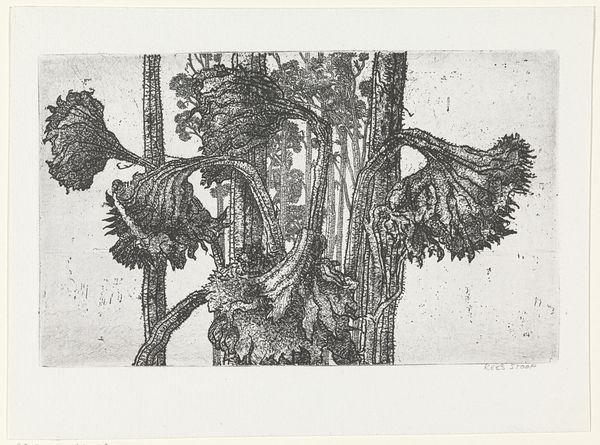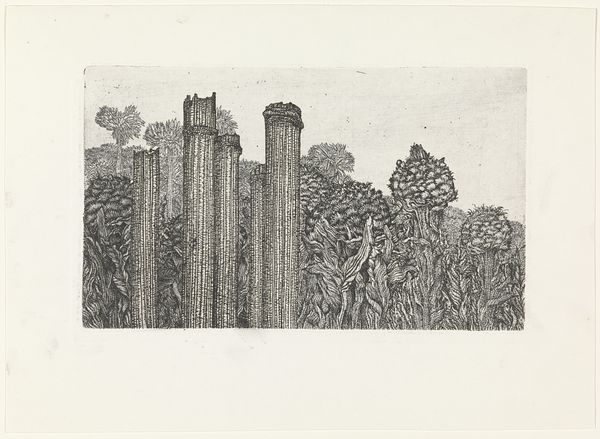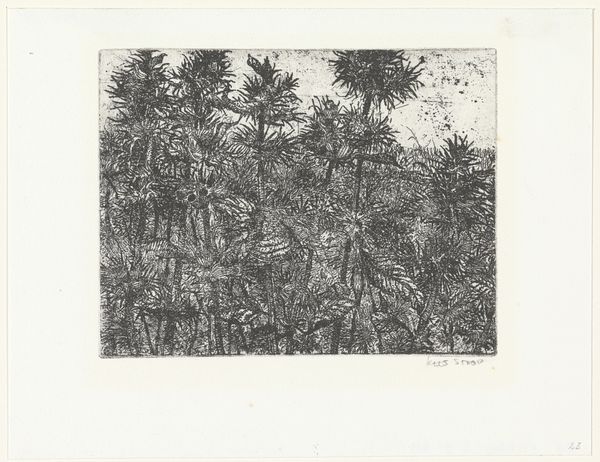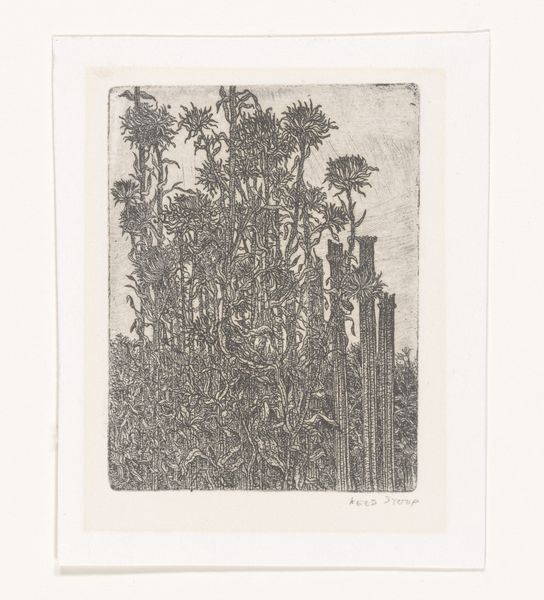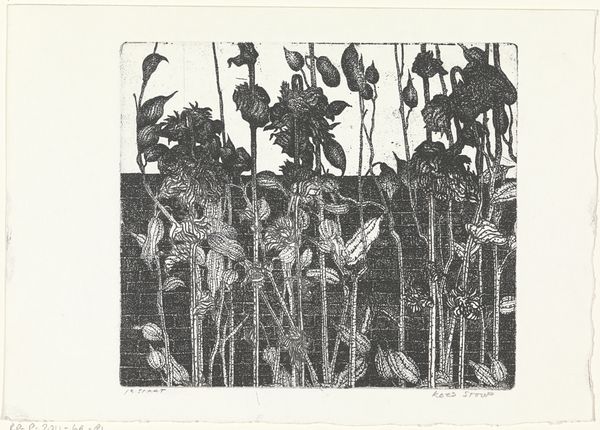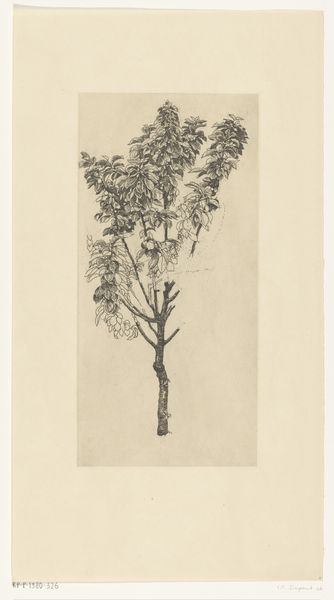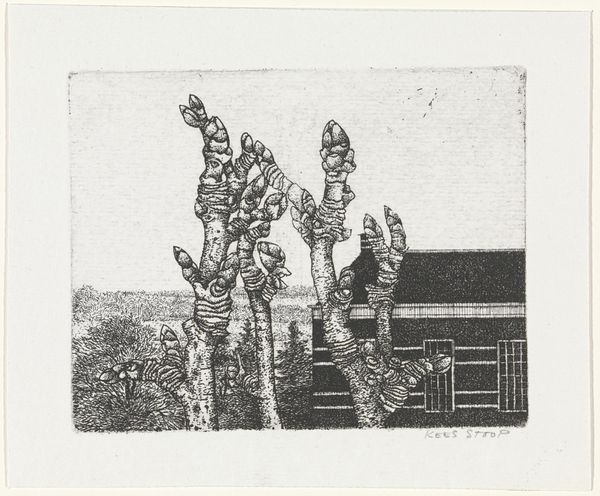
print, etching
# print
#
etching
#
landscape
#
etching
#
linocut print
#
geometric
#
plant
Dimensions: height 250 mm, width 308 mm, height 160 mm, width 250 mm
Copyright: Rijks Museum: Open Domain
Editor: We are looking at "Vertakte stengels," or "Branched Stems," a 1970-1972 etching by Kees Stoop. It reminds me a little bit of expressionist woodcuts, the way the dark lines define the plant forms. How do you interpret this work? Curator: I see a powerful statement about the relationship between nature and human intervention. Stoop created this in a period of increased environmental awareness. The “branched stems” could symbolize both resilience and vulnerability of the natural world when faced with external pressures like deforestation, or even the dawn of genetic modification. Editor: The description says it’s a landscape, but the perspective is cropped and compressed. I'm used to landscapes showing vast expanses. Curator: Exactly! This subversion of landscape invites us to consider how the notion of "landscape" has been used politically. Whose land is being depicted, and for what purpose? Is Stoop perhaps alluding to the colonial gaze that has historically framed landscapes for exploitation? Look closely – are these thriving plants, or are they struggling, damaged perhaps? Editor: I hadn’t considered it in those terms. It makes me think about contemporary debates on sustainability. Curator: Stoop’s choice of etching, a medium that requires careful, almost surgical, intervention on a metal plate, further reinforces the themes of manipulation and control. What responsibility do we have to ensure the sustainability you mentioned? Does that ethic extend equally to all humans regardless of socio-economic status? Editor: So the piece is more than just a pretty landscape. It's a social commentary using plants as a motif? Curator: Precisely! It challenges us to critically examine our relationship with the environment and its resources through intersectional narratives of environmentalism, capitalism, and cultural sustainability. I'm grateful to see how you're reflecting on how this etching fits within today's complex environmental discourse. Editor: Thanks for sharing such an incisive understanding. I’m definitely seeing more depth now.
Comments
No comments
Be the first to comment and join the conversation on the ultimate creative platform.
